Blog Basics -
Choosing a Blog Service

Blog Basics
Choosing a Blog Service


/en/blogbasics/developing-your-blog/content/
Once you have an idea of what you want your blog to be like, the next step is to pick the blog service you'll use to create your blog. There are many different sites that offer blog hosting. Which one should you use? It depends on what you want to share, and how you want to share it. You may even find that you'd rather share with a microblogging service like Tumblr or Twitter, or a social network like Facebook.
In this lesson, you'll get an introduction to popular blog services. Once you're familiar with these services, you'll be able to figure out which one is best for you.
A blog service is a website that lets you create and maintain a blog. It hosts your blog, which means it gives your blog its own web address, or URL. Your blog service also stores your blog's data. Each blog service has different features, but they all let you share your opinions, interests, photos, and more.
There are two basic types of blog services:
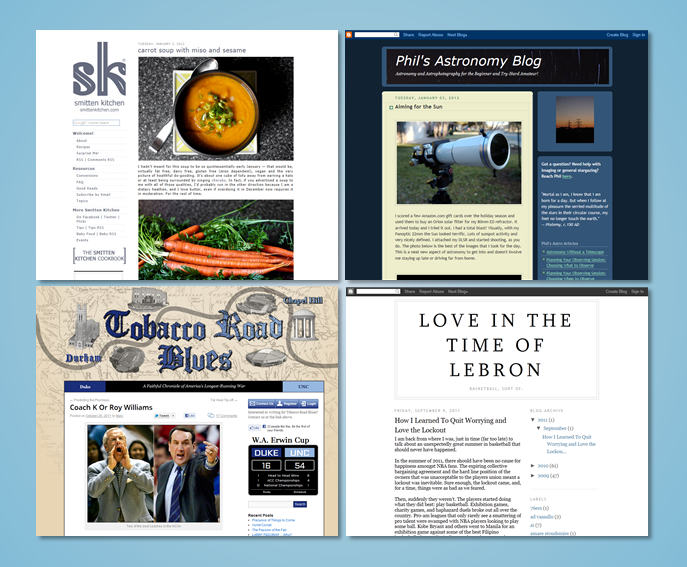
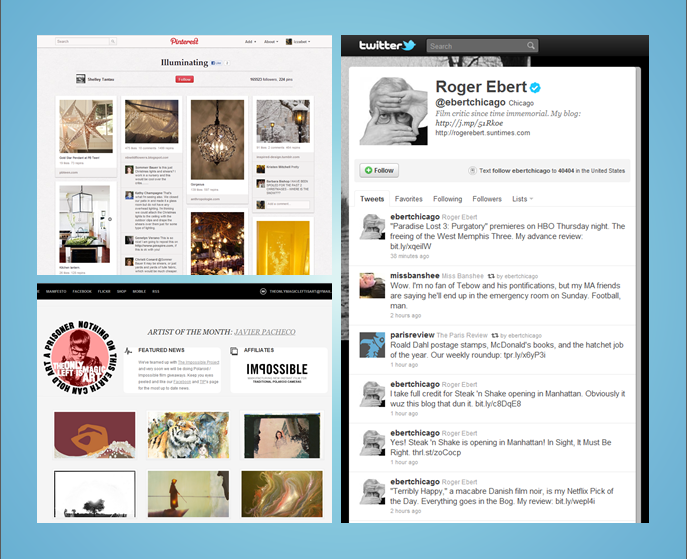
The two biggest traditional blog services are WordPress and Blogger. Both allow you to create and customize your own blog, and both offer good options for creating all types of posts. The main difference between the two is the options they offer and their ease of use.
WordPress is the most popular traditional blog service. It offers advanced blog customization features that let you control your blog's appearance and manage comments, blog post drafts, and more. We have a tutorial all about Learning WordPress.
Some of its advanced tools are designed for people who are familiar with HTML, which is a special computer language used for formatting websites. Even if you know nothing about HTML, you can still customize your WordPress blog's appearance with templates, or themes.
The downside to these options is that WordPress's blog management interface, called the Dashboard, can be a little confusing to navigate at first. However, WordPress has extensive support tools to help you get started.
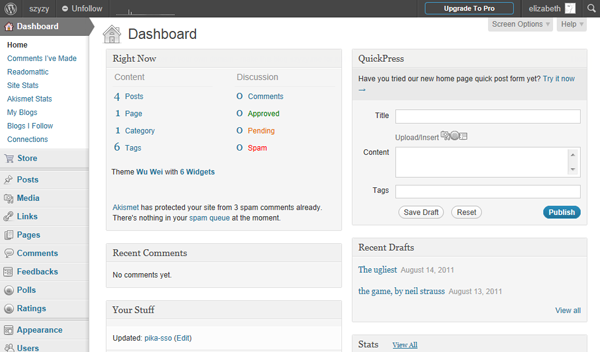
For videos and more information about WordPress, be sure to check out our tutorial.
Blogger is the second most popular traditional blog service. It offers slightly fewer blog customization and management features than WordPress, but it still includes plenty of ways to control your blog's appearance, including a large selection of themes. Because it includes fewer options, Blogger's interface is simpler than WordPress', so you may find it easier to use.
Blogger is a Google product, so if you already have a Google account getting started with Blogger will be especially easy.
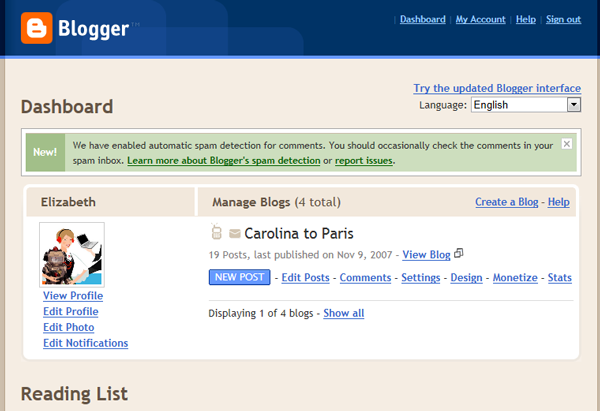
To learn more, visit the Blogger Help Center or watch more instructional videos on Blogger's official YouTube channel.
Tumblr, Twitter, and Pinterest are three of the most popular microblogging sites. Facebook, a social network, can also be used for sharing.
Tumblr is a microblogging service that lets you create and update your own blog. People use Tumblr to share images, videos, links, and short text posts. Tumblr's simple posting tools and visually appealing layouts make it ideal for photoblogs, humor blogs, and other blogs that are updated frequently with short posts.

Like traditional blogging services, Tumblr offers options to customize the appearance of your blog, including a variety of visual themes. In other ways, Tumblr is different from traditional blogging services. For instance, Tumblr doesn't include an option to leave comments on blog posts, which means it's not an ideal tool for having a discussion. Instead, readers can like a post or reblog it, which shares the post on their own Tumblr blogs.
Watch this video from Planet Nutshell to learn more about Tumblr.
Pinterest is a microblogging tool that lets you create and share collections of interesting links, images, and more. These collections are called pinboards. The items you share on your pinboards are then shared with others on Pinterest, who can then add your posts to their own pinboards. Pinterest can be a good tool if you're interested in sharing the things you enjoy with a wide audience but don't necessarily care about writing and managing your own blog.
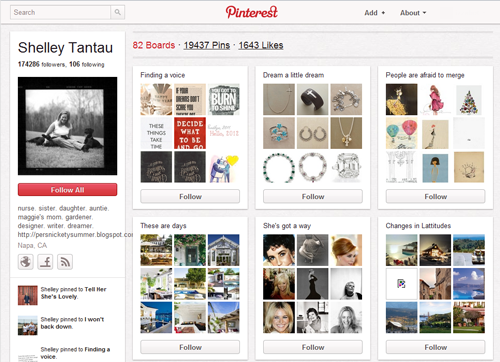
To learn more about Pinterest, visit our Pinterest tutorial. It will show you how to add an account, create pinboards, share posts, and more.
Twitter is a tool that lets you post short text updates of 280 characters or less. Unlike Tumblr or traditional blogging services, you can't use Twitter to create your own blog. Instead, your updates appear on your Twitter profile, in a feed that people can view or subscribe to. People use Twitter for many reasons, including sharing news and events, keeping up with friends, and engaging in discussions. If you have a traditional blog, Twitter can be a good way to promote your blog by connecting with other bloggers and linking to your own blog posts.
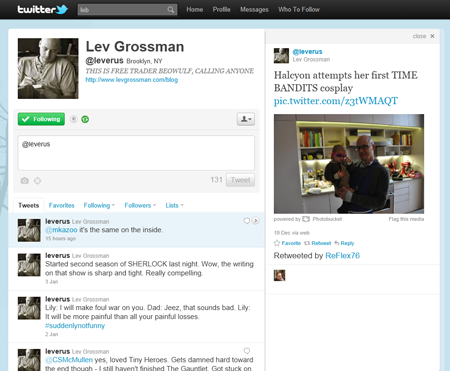
To learn more about Twitter, visit our Twitter tutorial. There, you'll learn how to set up an account, start posting, subscribe to others' posts, and more.
Facebook is the world's largest social networking site. The main reason people use Facebook is to stay connected with friends and family. However, sharing is also a large part of the Facebook experience. You can post links, photos, and videos to your profile and share longer, blog-like posts with the Notes tool. If you decide that you don't need your own blog and just want to share occasionally, Facebook can be a good way to do that.
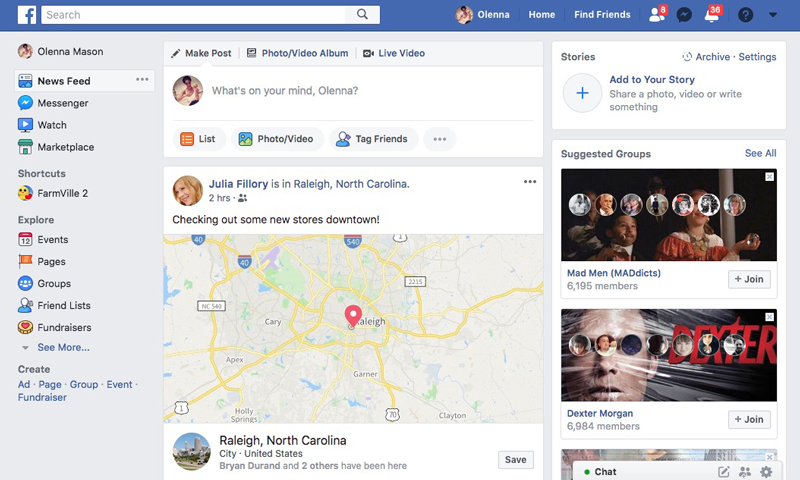
Most people use Facebook just for sharing with people they know. However, you can also use Facebook to reach a wider audience by allowing others to subscribe to things you've shared publicly, or by setting up a Facebook Fan Page.
To learn more about sharing with Facebook, visit our Facebook tutorial.
Even if you choose to use a traditional blog platform to create your blog, you can enhance your blog with microblogging. Many bloggers promote their blogs by maintaining Facebook, Twitter, and Pinterest accounts for their blogs and posting links to their blog posts. (You'll learn more about promoting your blog in Lesson 5.)
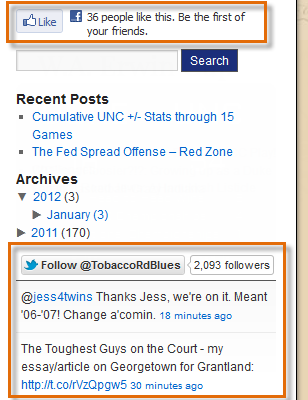
Choosing the right blog service is important. Your blog service will affect your blog's appearance, as well as what you're able to do with it. Every blog service has some limitations, and some services are better than others for certain purposes.
Now that you know about various blog services, you can think about the features you want for your blog and decide which service is best for you. For instance, if you want a blog that's more like a website with different categories and sections, you should probably choose a traditional blog service.
Keep in mind that more features doesn't always mean a better blogging experience. The more options your blog service has, the more complicated blogging can become. If you don't actually plan on using the advanced features traditional blog services like WordPress and Blogger have to offer, you'll probably find a simpler service like Tumblr better suited to your needs.
Use the flowchart infographic below to help determine which blog service you should use.
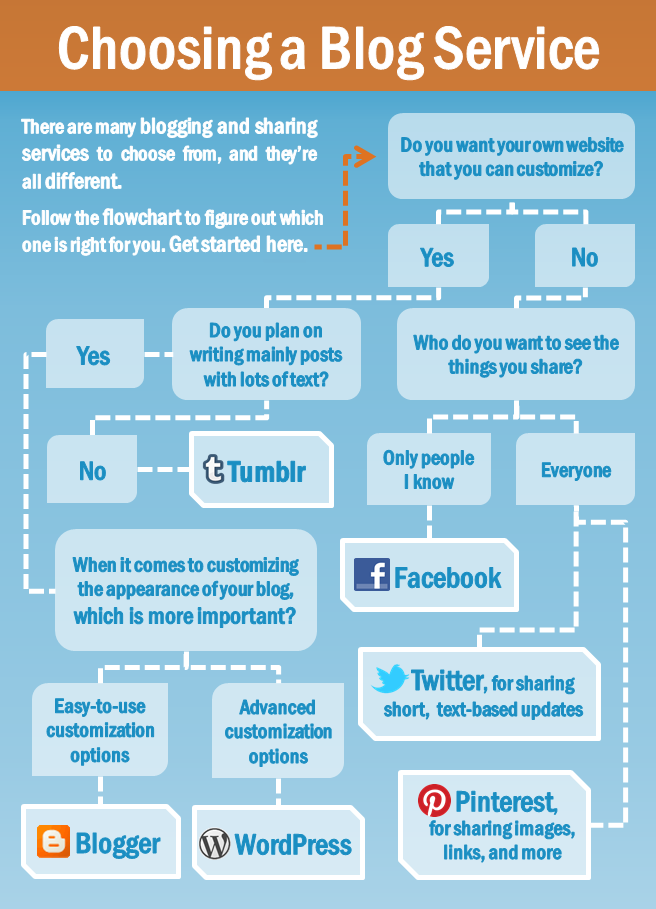
/en/blogbasics/writing-and-promoting-your-blog/content/